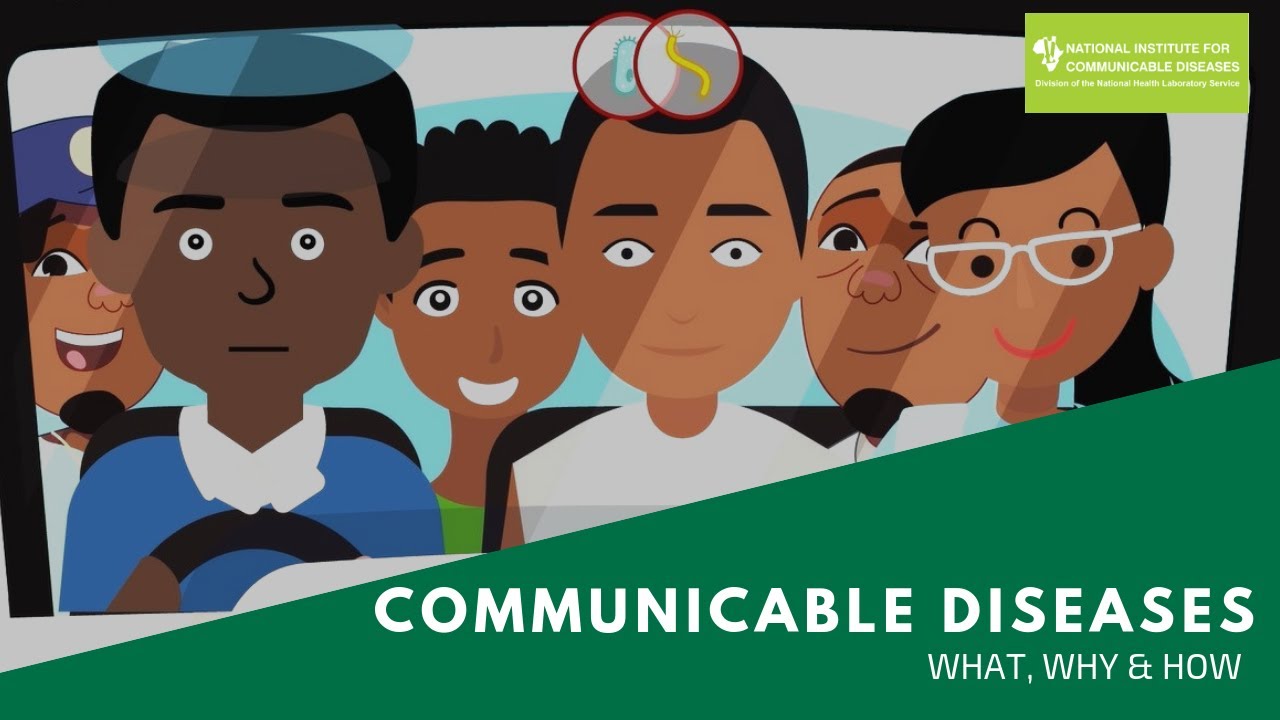Community Health Nursing: Communicable Diseases
Summary
TLDRIn this video, the basics of communicable diseases are explored, including how they spread and how to prevent them. The script covers the chain of infection, emphasizing primary, secondary, and tertiary prevention strategies. Key diseases such as HIV, Hepatitis, Herpes, STIs, and tuberculosis are discussed, alongside their transmission methods, symptoms, and treatments. The importance of vaccination, health screenings, and education in preventing the spread of diseases is highlighted, along with the role of community health nurses in mitigating outbreaks and promoting public health.
Takeaways
- 😀 Communicable diseases are illnesses that spread from person to person and can be prevented through various strategies.
- 😀 The chain of infection involves an agent, a reservoir, portal of exit, transmission, portal of entry, and a susceptible host.
- 😀 Primary prevention focuses on preventing diseases before they even occur, through measures like immunizations, education, and safe practices.
- 😀 Secondary prevention aims to catch diseases before symptoms appear, through methods like health screenings and post-exposure prophylaxis.
- 😀 Tertiary prevention focuses on minimizing the damage of a disease after it has caused harm, through treatment and rehabilitation.
- 😀 Reportable diseases, which are tracked by health departments and the CDC, help in monitoring outbreaks and trends in communicable diseases.
- 😀 The elderly, the very young, and individuals with compromised immune systems are more susceptible to communicable diseases.
- 😀 Vaccinations, such as for hepatitis A and B, are essential in preventing certain communicable diseases and reducing their spread.
- 😀 Sexually transmitted infections (STIs) like HIV, hepatitis, and syphilis are spread through direct contact, and prevention involves safe sex practices and vaccinations.
- 😀 Diseases like tuberculosis and meningococcal disease are spread through respiratory droplets, requiring specific prevention measures like vaccinations and antibiotics.
- 😀 Lyme disease and Legionnaires' disease are not communicable but can be contracted through environmental exposure, highlighting the need for community education and preventative measures.
Q & A
What is a communicable disease?
-A communicable disease is a disease that can be spread from one person to another. It involves an agent that causes the disease, a reservoir where the agent survives, and a portal of exit and entry for transmission.
What are the key components of the chain of infection?
-The chain of infection consists of the following key components: the infectious agent (the pathogen), the reservoir (where the pathogen resides), the portal of exit (how the pathogen exits the reservoir), the mode of transmission (how the pathogen spreads), the portal of entry (how the pathogen enters the host), and the susceptible host (a person who can be infected).
Who are the most susceptible individuals to communicable diseases?
-The most susceptible individuals are the elderly, young children, and those with weakened immune systems, as their bodies are less capable of fighting off infections.
What is primary prevention in terms of communicable diseases?
-Primary prevention involves stopping a disease before it starts. It includes measures like immunizations, health education to reduce risky behaviors (e.g., safer sex, handwashing), and promoting proper food handling.
What does secondary prevention focus on?
-Secondary prevention focuses on detecting and treating diseases early, before symptoms or damage occur. Examples include health screenings, post-exposure prophylaxis (e.g., rabies shots), and contact tracing.
What is tertiary prevention and why is it important?
-Tertiary prevention aims to reduce the complications or damage caused by an existing disease. This includes treatments, rehabilitation, and referring patients to community resources to manage long-term effects.
What are some examples of sexually transmitted infections (STIs) mentioned in the video?
-Examples of STIs mentioned in the video include HIV, hepatitis (A, B, C), herpes, HPV, chlamydia, syphilis, gonorrhea, and trichomoniasis.
How can HIV be transmitted and what are the preventive measures?
-HIV is transmitted through direct contact with bodily fluids such as semen, blood, vaginal fluids, and breast milk. Preventive measures include using condoms, body substance isolation (e.g., gloves when handling blood), and educating the public on safer practices.
What are the main symptoms of tuberculosis (TB) and its prevention methods?
-The main symptoms of tuberculosis include coughing, chest pain, bloody sputum, weakness, fatigue, and weight loss. TB is airborne, so the prevention method is avoiding contact with infected individuals and performing regular TB screenings.
What is Legionnaires' disease, and how is it spread?
-Legionnaires' disease is a form of pneumonia caused by bacteria found in natural water sources, which can spread to man-made systems like hot tubs or plumbing. It's not communicable between people, but it can be contracted by inhaling contaminated water droplets.
Outlines

このセクションは有料ユーザー限定です。 アクセスするには、アップグレードをお願いします。
今すぐアップグレードMindmap

このセクションは有料ユーザー限定です。 アクセスするには、アップグレードをお願いします。
今すぐアップグレードKeywords

このセクションは有料ユーザー限定です。 アクセスするには、アップグレードをお願いします。
今すぐアップグレードHighlights

このセクションは有料ユーザー限定です。 アクセスするには、アップグレードをお願いします。
今すぐアップグレードTranscripts

このセクションは有料ユーザー限定です。 アクセスするには、アップグレードをお願いします。
今すぐアップグレード5.0 / 5 (0 votes)






